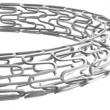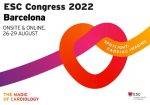Patients undergoing acute coronary syndrome (ACS) benefit from percutaneous coronary intervention (PCI). At present, there is no question about this. However, residual ischemia after PCI is associated with a worse prognosis. Angiography studies and intravascular imaging are useful to assess post intervention outcomes, but they are limited when it comes to the physiological assessment of...
Devices to Prepare Severely Calcified Lesions: Is There a Difference When Assessed by Intravascular Imaging?
Severely calcified coronary lesions are found in 25% of patients undergoing PCI, and their presence has a negative impact in long term outcomes. These lesions difficult stent expansion and increase device failure rate, even when using the latest generation of drug eluting stents (DES). This is why there is an interest in lesion preparation strategies...
Should We Start Using Ultra-Thin Struts?
The benefits of DES are well known, as well as the benefits of more recent polymer-based DES versions (even those with no polymers). However, strut size is no small matter, and might even make the difference, seeing as thinner struts are associated to better deliverability, simpler crossing profile in bifurcations, better endothelization and healing. Besides,...
TCT 2022 | Angioplasty vs. Surgery: The BEST Study Long-Term Results
The BEST study was a prospective, randomized study to compare percutaneous coronary intervention (PCI) with everolimus-eluting stents vs. myocardial revascularization surgery (MRS) in patients with multivessel disease. The analysis was interrupted early due to slow patient inclusion. The study included 880 patients, who were randomized 438 to the PCI arm and 442 to the MRS arm....
Paraguay Sessions 2022 | Relive the Contest for Young Interventionists
Relive the traditional Contest for Young Interventional Cardiologists at Paraguay Regional Sessions 2022. During this scientific session, carried out on June 30, 2022, 8 challenging interventional cardiology clinical studies were presented by promising young interventionists from Latin America. They were assessed by a panel of experts that also commented on the most relevant points of...
Cardiogenic Shock – SOLACI-SOCIME 2022@SCAI Session
✔️ Cardiogenic Shock – SOLACI-SOCIME 2022@SCAI Session ✔️ Video del SOLACI-SOCIME 2022 👨🏫 Contents: 00:15 – Interactive Case presentation: STEMI with Multivessel Disease and Cardiogenic Shock. Panel discussion Fellow from SOLACI – Dr. Daniel Zazueta (MEX) 10:03 – Classification and Prognosis: The SCAI SHOCK Consensus – Dr. Hector Tamez (USA) 21:42 – Treatment of STEMI...
Mortality and Bleeding in Access Site Choice: Systematic Review
In 1992, Kiemeneij performed the first transradial coronary procedure, following Campeau’s description of that access in 1989. It’s been 30 years since that milestone in interventional cardiology. Over time, the number of procedures conducted with this approach has increased exponentially, and it is the main approach in most centers in different clinical scenarios. Historically, the...
RIPCORD 2 Study: Routine Assessment Using Pressure Wires in Acute Coronary Syndrome
The inclusion of fractional flow reserve (FFR) has changed how coronary interventions are treated. Current guidelines endorse its use in intermediate lesions with no evidence of ischemia in non-invasive studies in patients with multivessel disease. The original RIPCORD (Routine Pressure Wire Assessment Influence Management Strategy at Coronary Angiography for Diagnosis of Chest Pain) study proposed...
Are FFR and IVUS Similar to Assess Intermediate Lesions?
In coronary artery disease (CAD), lumen area and plaque burden, characteristics and physiological impact are what define prognosis. At present, coronary angiography continues to be the gold standard for CAD assessment. When considering PCI to treat intermediate lesions, FFR has been shown beneficial and safe. Not yet IVUS. 1682 patients with intermediate lesions (40 –...
ESC 2022 | Should We Follow-Up with Functional Testing in High-Risk Patients after CTA?
While the need for repeat cinecoronary angiography after transluminal coronary angioplasty (TCA) has decreased with the use of drug-eluting stents and improved medical treatment, patients still present ischemic recurrence or cardiovascular events at follow-up. Using a functional test at follow-up after TCA or myocardial revascularization (CMR) is a frequent practice in our context. This is...









